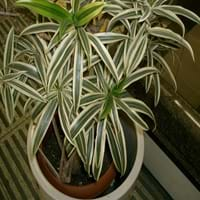Life Span
Perennial
Perennial
Type
Bulb or Corm or Tuber
Broadleaf Evergreen
Origin
South America, Argentina
Madagascar
Types
Not Available
Not Available
Habitat
Temperate Regions
Tropical Indian Ocean Islands
USDA Hardiness Zone
5-9
10-15
Habit
Clump-Forming
Upright/Erect
Minimum Height
Not Available
Minimum Width
Not Available
Flower Color
Light Blue, Light Purple, Silver, Sky Blue
White, Green
Flower Color Modifier
Bicolor
Bicolor
Fruit Color
Not Available
Not Available
Leaf Color in Spring
Green, Light Green, Gray Green
Green, Dark Green
Leaf Color in Summer
Light Green
Green, Dark Green
Leaf Color in Fall
Several shades of Green
Green, Dark Green
Leaf Color in Winter
Light Green
Green, Dark Green
Leaf Shape
Grass like
Lanceolate
Plant Season
Spring
Spring, Summer, Fall, Winter
Sunlight
Full Sun, Partial Sun, Partial shade
Partial Sun, Partial shade
Growth Rate
Medium
Not Available
Type of Soil
Clay, Loam, Sand
Loam, Sand
The pH of Soil
Acidic, Neutral, Alkaline
Acidic, Neutral
Soil Drainage
Well drained
Well drained
Bloom Time
Early Spring, Spring, Late Winter
Indeterminate
Tolerances
Drought
Not Available
Where to Plant?
Container, Ground
Container, Ground, Pot
How to Plant?
By dividing rhizomes, tubers
stem tip cuttings
Plant Maintenance
Medium
Medium
Watering Requirements
Average Water Needs, Do Not over Water, Requires regular watering
Average Water Needs, Do Not over Water
In Summer
Lots of watering
Lots of watering
In Spring
Moderate
Moderate
In Winter
Average Water
Average Water
Soil pH
Acidic, Neutral, Alkaline
Acidic, Neutral
Soil Type
Clay, Loam, Sand
Loam, Sand
Soil Drainage Capacity
Well drained
Well drained
Sun Exposure
Full Sun, Partial Sun, Partial shade
Partial Sun, Partial shade
Pruning
Remove damaged leaves, Remove dead branches, Remove dead leaves
Remove damaged leaves
Fertilizers
All-Purpose Liquid Fertilizer
10-10-10 diluted liquid fertilizer
Pests and Diseases
Slugs, Snails
Flecking, Fluoride toxicity, Fusarium leaf spot
Plant Tolerance
Drought
Drought
Flowers
Showy
Insignificant
Flower Petal Number
Single
Single
Foliage Texture
Medium
Medium
Foliage Sheen
Matte
Glossy
Attracts
Bees, Birds, Hummingbirds
Bugs, Mealybugs, Spider Mites
Allergy
Not Available
no allergic reactions
Aesthetic Uses
Showy Purposes
Beautification
Beauty Benefits
Not Available
Not Available
Environmental Uses
Air purification
Air purification
Medicinal Uses
No Medicinal Use
Antipyretic, Diarrhea, Dysentry, Dysmenorrhea, Hemostatic, Malaria
Part of Plant Used
Flowers
Bark, Leaves
Other Uses
Not Available
Used to make herbal teas
Used As Indoor Plant
Yes
Yes
Used As Outdoor Plant
Yes
Yes
Garden Design
Container, Lawns and Turf, Mixed Border, Rock Garden / Wall, Wildflower
Container, Feature Plant, Houseplant, Screening, Wind Break, Tropical
Botanical Name
Ipheion uniflorum
DRACAENA reflexa
Common Name
Spring Starflower, Springstar
Pleomele, Song-of-India
In Hindi
Spring Starflower
Song-of-India
In German
Frühling Borretsch
Song-of-India
In French
Spring Starflower
Song- of- Inde
In Spanish
primavera Flor de estrella
Song- de - la India
In Greek
άνοιξη starflower
Τραγούδι - του -Ινδίας
In Portuguese
primavera Starflower
Canção -da-Índia
In Polish
Wiosna Starflower
Song- of- Indie
In Latin
Spring Starflower
Song of India :
Phylum
Magnoliophyta
Magnoliophyta
Class
Lilopsida
Lilopsida
Order
Asparagales
Liliales
Family
Liliaceae
Agavaceae
Clade
Angiosperms, Monocots
Angiosperms, Monocots
Tribe
Gilliesieae
Not Available
Subfamily
Allioideae
Nolinoideae
Number of Species
Not Available
Not Available
Properties of Spring Starflower and Song-of-India
Wondering what are the properties of Spring Starflower and Song-of-India? We provide you with everything About Spring Starflower and Song-of-India. Spring Starflower doesn't have thorns and Song-of-India doesn't have thorns. Also Spring Starflower does not have fragrant flowers. Spring Starflower has allergic reactions like Not Available and Song-of-India has allergic reactions like Not Available. Compare all the properties and characteristics of these two plants. Find out which of these plant can be used as indoor plant. If you are interested to decorate your house and garden, find out aesthetic uses, compare them and select the plant which will beautify your surrounding. Along with beautification, try comparing medicinal and edible uses of Spring Starflower and Song-of-India and you can choose the plant having best and most benefits.
Season and Care of Spring Starflower and Song-of-India
Season and care of Spring Starflower and Song-of-India is important to know. While considering everything about Spring Starflower and Song-of-India Care, growing season is an essential factor. Spring Starflower season is Spring and Song-of-India season is Spring. The type of soil for Spring Starflower is Clay, Loam, Sand and for Song-of-India is Loam, Sand while the PH of soil for Spring Starflower is Acidic, Neutral, Alkaline and for Song-of-India is Acidic, Neutral.
Spring Starflower and Song-of-India Physical Information
Spring Starflower and Song-of-India physical information is very important for comparison. Spring Starflower height is 10.20 cm and width 5.10 cm whereas Song-of-India height is Not Available and width Not Available. The color specification of Spring Starflower and Song-of-India are as follows:
Spring Starflower flower color: Light Blue, Light Purple, Silver and Sky Blue
Spring Starflower leaf color: Green, Light Green and Gray Green
Song-of-India flower color: White and Green
- Song-of-India leaf color: Green and Dark Green
Care of Spring Starflower and Song-of-India
Care of Spring Starflower and Song-of-India include pruning, fertilizers, watering etc. Spring Starflower pruning is done Remove damaged leaves, Remove dead branches and Remove dead leaves and Song-of-India pruning is done Remove damaged leaves. In summer Spring Starflower needs Lots of watering and in winter, it needs Average Water. Whereas, in summer Song-of-India needs Lots of watering and in winter, it needs Average Water.





